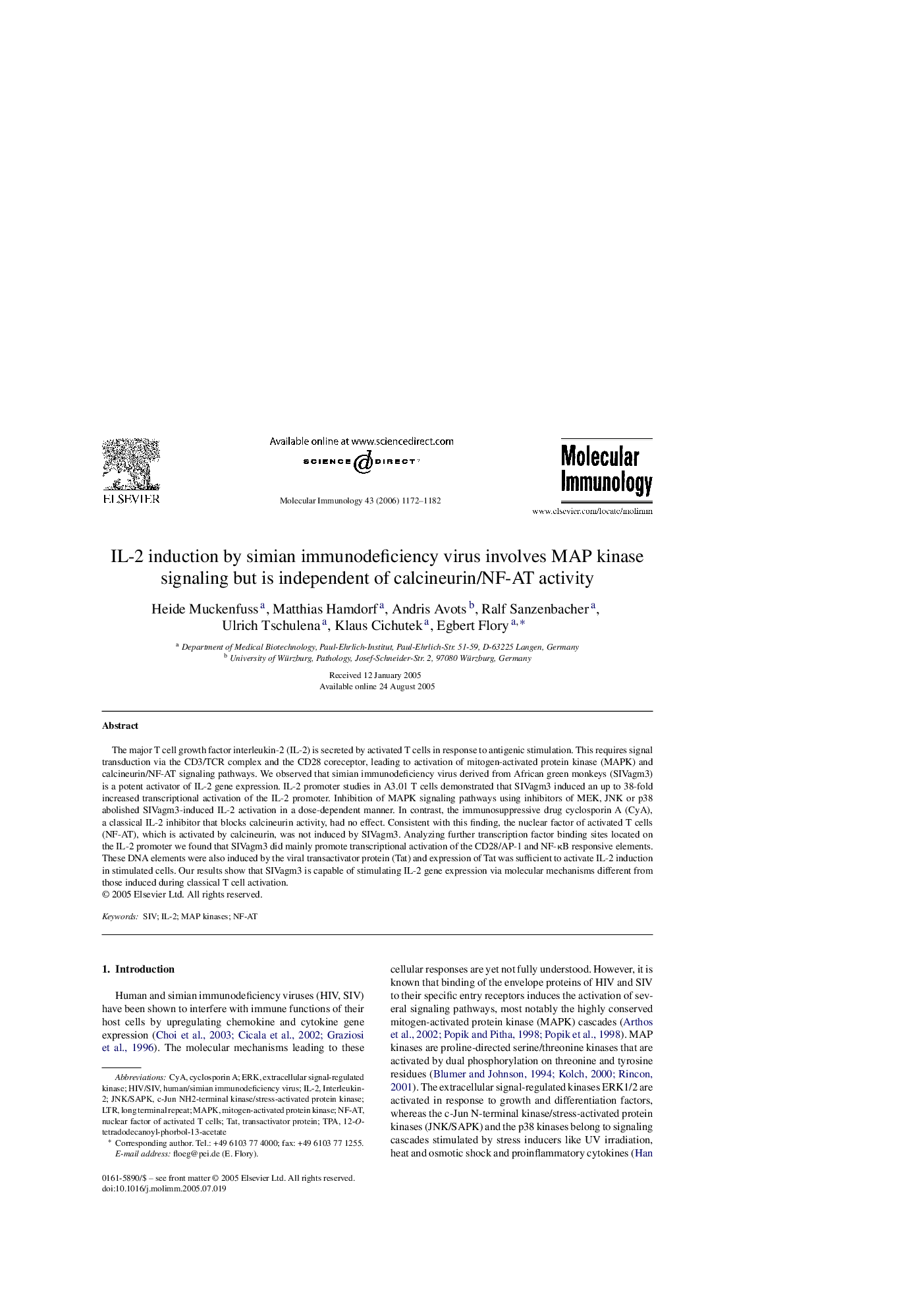| Article ID | Journal | Published Year | Pages | File Type |
|---|---|---|---|---|
| 2833044 | Molecular Immunology | 2006 | 11 Pages |
The major T cell growth factor interleukin-2 (IL-2) is secreted by activated T cells in response to antigenic stimulation. This requires signal transduction via the CD3/TCR complex and the CD28 coreceptor, leading to activation of mitogen-activated protein kinase (MAPK) and calcineurin/NF-AT signaling pathways. We observed that simian immunodeficiency virus derived from African green monkeys (SIVagm3) is a potent activator of IL-2 gene expression. IL-2 promoter studies in A3.01 T cells demonstrated that SIVagm3 induced an up to 38-fold increased transcriptional activation of the IL-2 promoter. Inhibition of MAPK signaling pathways using inhibitors of MEK, JNK or p38 abolished SIVagm3-induced IL-2 activation in a dose-dependent manner. In contrast, the immunosuppressive drug cyclosporin A (CyA), a classical IL-2 inhibitor that blocks calcineurin activity, had no effect. Consistent with this finding, the nuclear factor of activated T cells (NF-AT), which is activated by calcineurin, was not induced by SIVagm3. Analyzing further transcription factor binding sites located on the IL-2 promoter we found that SIVagm3 did mainly promote transcriptional activation of the CD28/AP-1 and NF-κB responsive elements. These DNA elements were also induced by the viral transactivator protein (Tat) and expression of Tat was sufficient to activate IL-2 induction in stimulated cells. Our results show that SIVagm3 is capable of stimulating IL-2 gene expression via molecular mechanisms different from those induced during classical T cell activation.
